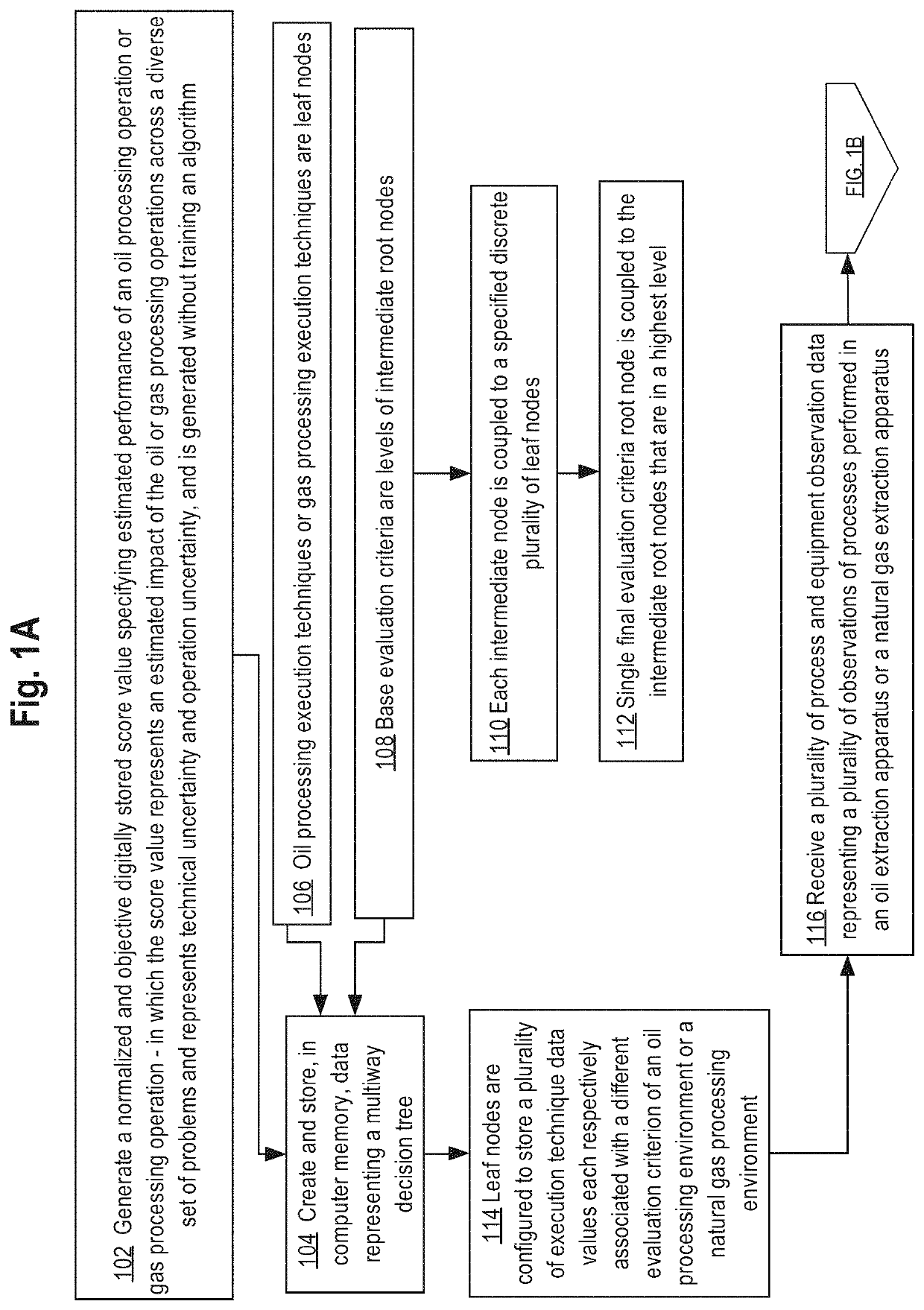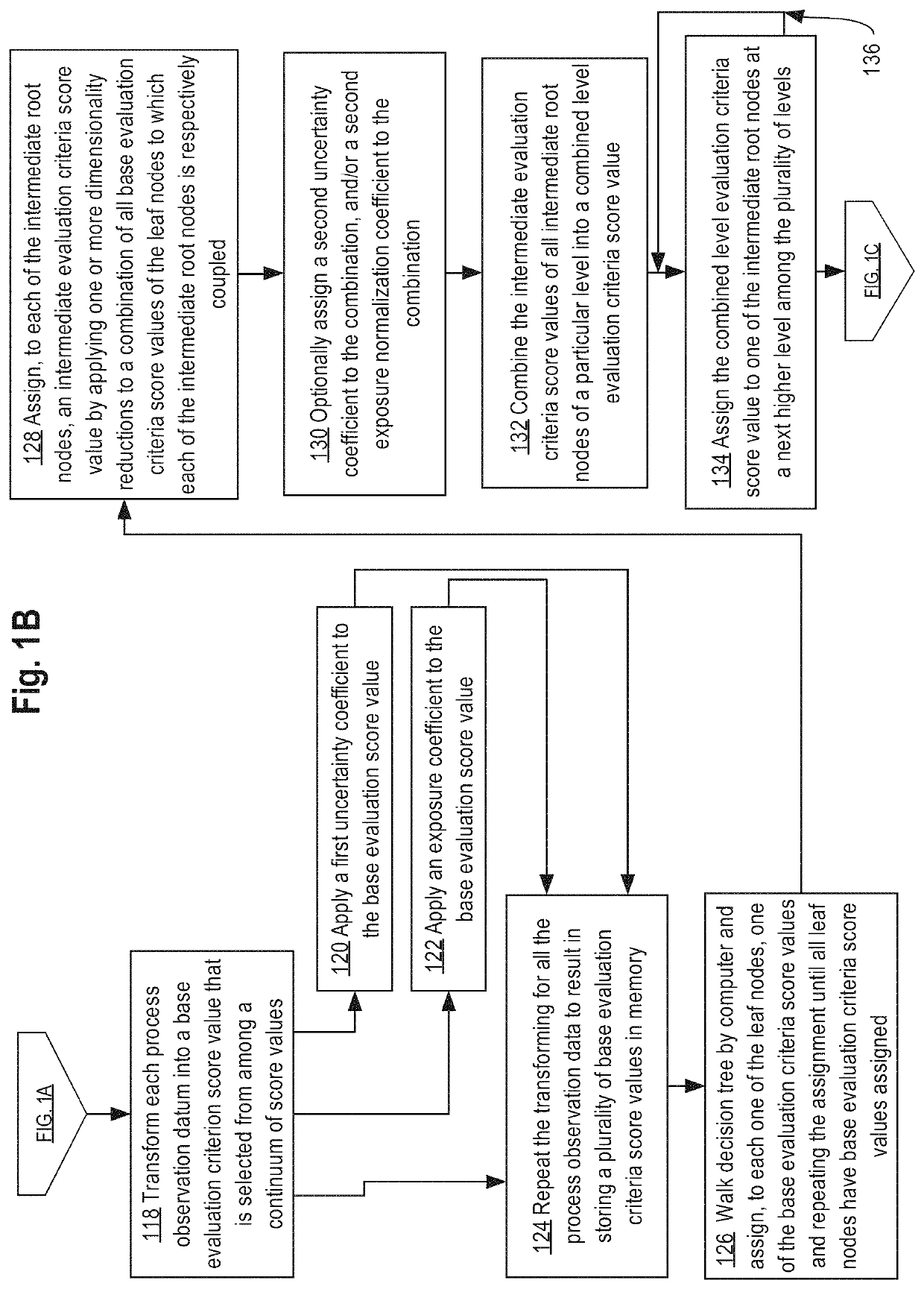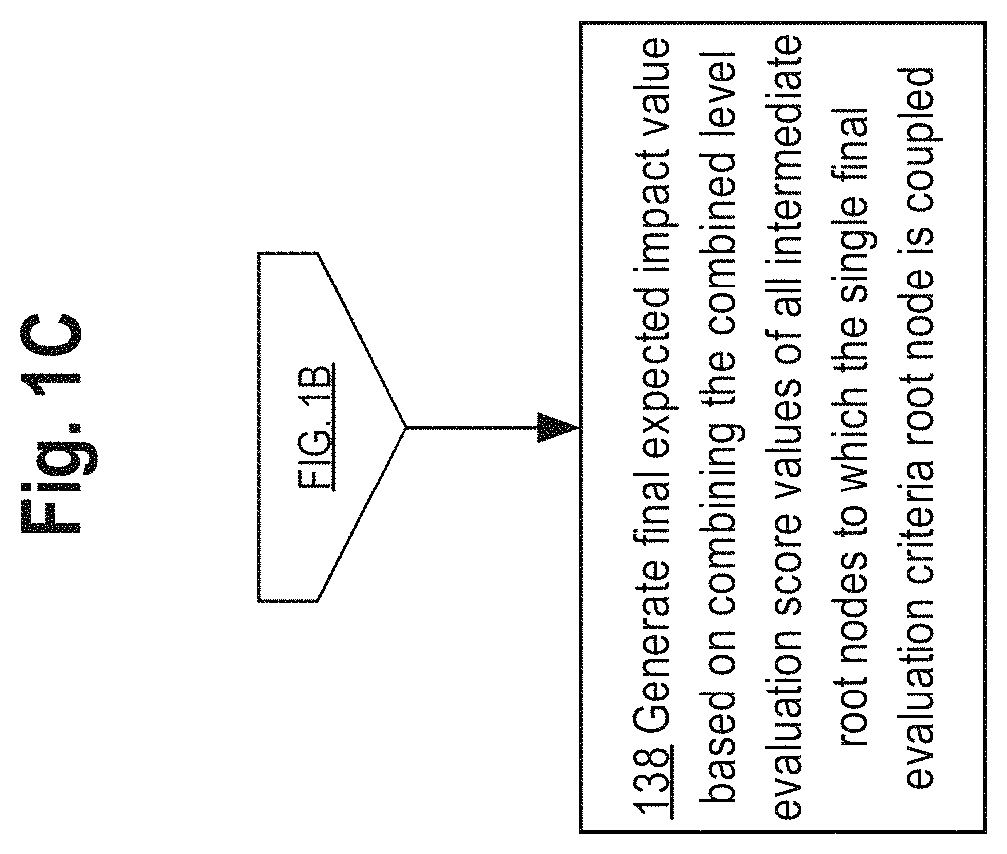Computer-implemented impact analysis of energy facilities
a technology of energy facilities and impact analysis, applied in the field of computer-based generation of score values, can solve problems such as inability to represent scores, serious consequences for people and the environment, and inability to meet the needs of users, and achieve only the effect of achieving the effect of achieving representative scores
- Summary
- Abstract
- Description
- Claims
- Application Information
AI Technical Summary
Benefits of technology
Problems solved by technology
Method used
Image
Examples
implementation example
8. Implementation Example
[0211]FIG. 27 illustrates an example objective score in accordance with an embodiment. FIG. 27 depicts a table 2700 comprising a plurality of rows 2702 and columns 2704. Rows 2702 represent stored digital data for different operational risks and columns 2704 store values of impact data associated with each risk. For example, a first row 2706 identifies the operational risk of “Equipment Leaks”, and column values in columns 2704 specify an event profile value of 78, control effects value of 78%, water value of 141, land value of 127, null community value, for a normalized score of 134. Various other operational risks may be stored in the table 2700, such as waste impacts, well collision, well control—drilling, and transportation leaks. Each of these risks has an associated event profile which provides a normalized score. Similarly, each risk has control efforts associated with the risk. The control efforts are represented as a percentage of a maximum possible...
PUM
 Login to View More
Login to View More Abstract
Description
Claims
Application Information
 Login to View More
Login to View More - R&D
- Intellectual Property
- Life Sciences
- Materials
- Tech Scout
- Unparalleled Data Quality
- Higher Quality Content
- 60% Fewer Hallucinations
Browse by: Latest US Patents, China's latest patents, Technical Efficacy Thesaurus, Application Domain, Technology Topic, Popular Technical Reports.
© 2025 PatSnap. All rights reserved.Legal|Privacy policy|Modern Slavery Act Transparency Statement|Sitemap|About US| Contact US: help@patsnap.com



